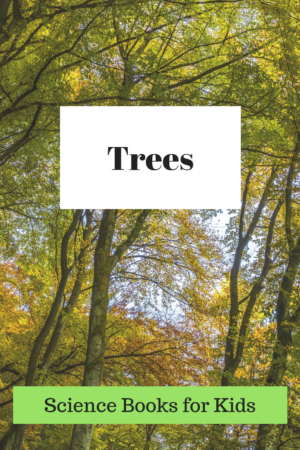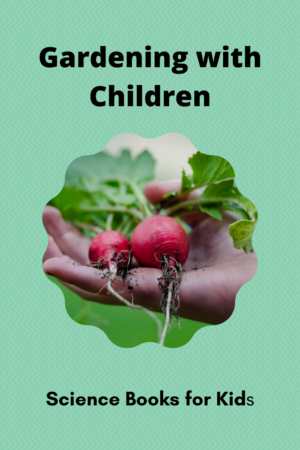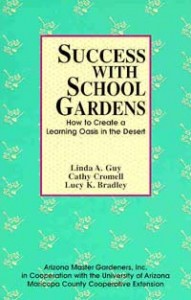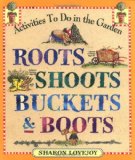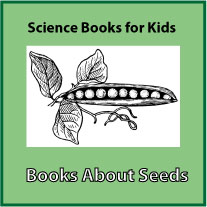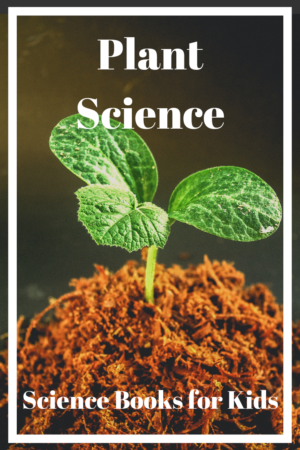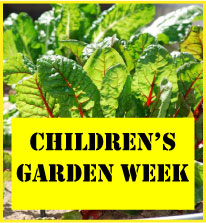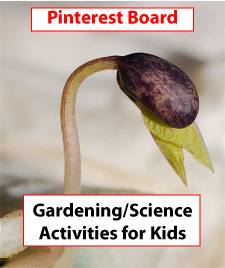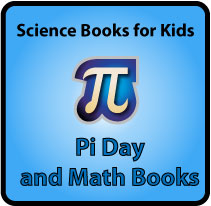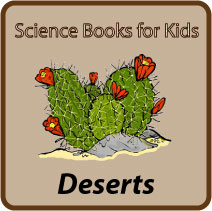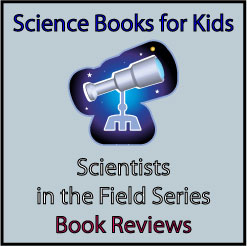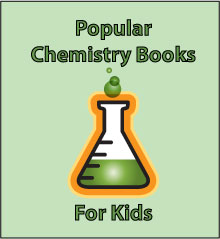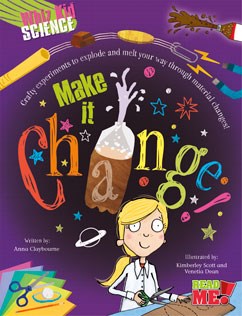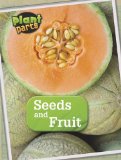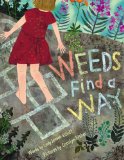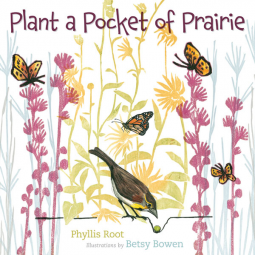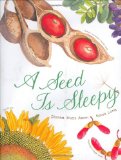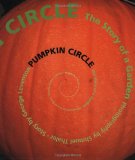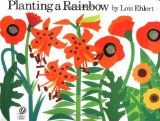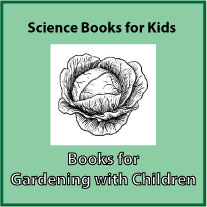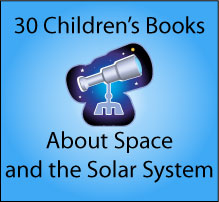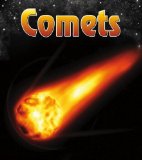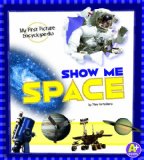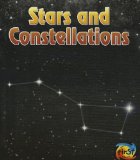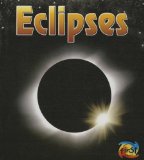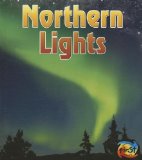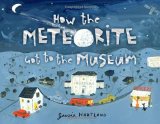March is Women’s History Month. To celebrate, we have gathered some children’s book biographies of remarkable women who have made significant impacts in the fields of science, technology, engineering and math.
The list keeps growing, so now it is 21+ books (last edited 7/2022).
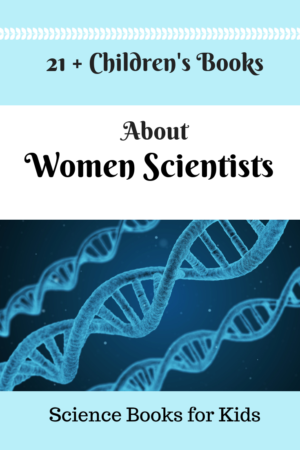
Historically women have been under-represented in STEM fields. Reading these biographies, it becomes apparent that early females interested in STEM faced discrimination. They managed to persevere, however, and make significant discoveries. Their stories are inspiring.
With so many wonderful biographies coming out recently, we started a new list of children’s books about Women Mathematicians.
Disclaimer: Just so you know, I am an affiliate with Amazon. If you make a purchase after clicking on one of the title links, I will receive a small commission at no extra charge to you, the proceeds of which will help maintain this website.
Last Name A-F
Greta Binford

Silk & Venom: Searching for a Dangerous Spider by Kathryn Lasky and her husband, photographer Christopher G. Knight is a middle grade biography of arachnologist, Greta Binford.
This book can work both for the spider squeamish and spider enthusiast because, although it is filled with large photographs of spiders, it isn’t a general book about spiders, but a biography. After reviewing Binford’s path to becoming a spider scientist, the story follows on her journey to the Caribbean to find a certain species of brown recluse.
Reading level: Ages 4-8 (Amazon, this is probably better for 9-12)
Hardcover: 64 pages
Publisher: Candlewick (February 22, 2011)
ISBN-10: 0763642223
ISBN-13: 978-0763642228
Rachel Carson


Spring After Spring: How Rachel Carson Inspired the Environmental Movement by Stephanie Roth Sisson reveals how Carson carefully observed natural events during her childhood, which is why she was able to notice things were changing later in her life and sound the alarm. Extensive back matter.
Age Range: 4 – 8 years
Publisher: Roaring Brook Press (August 14, 2018)
ISBN-10: 1626728194
ISBN-13: 978-1626728196


Rachel Carson and Her Book That Changed the World by Laurie Lawlor and illustrated by Laura Beingessner
by Laurie Lawlor and illustrated by Laura Beingessner
This picture book biography was written to commemorate the fiftieth anniversary of the publication of Rachel Carson’s groundbreaking book, Silent Spring.
Lexile Measure: 890L (What’s this?)
Publisher: Holiday House (February 1, 2012)
ISBN-10: 0823423700
ISBN-13: 978-0823423705


Rachel Carson: Preserving a Sense of Wonder (Images of Conservationists) by Joseph Bruchac and illustrated by Thomas Locker
by Joseph Bruchac and illustrated by Thomas Locker
Encompassing Rachel Carson’s life in a few pages, Bruchac emphasizes her love of nature in this picture book biography. The title refers to Carson’s book, A Sense of Wonder.
Age Range: 4 – 10 years
Publisher: Fulcrum Publishing (May 1, 2009)
ISBN-10: 1555916953
ISBN-13: 978-1555916954
Middle grade level:
Rachel Carson and Ecology for Kids: Her Life and Ideas, with 21 Activities and Experiments (For Kids series) by Rowena Rae


What could be better than an in depth history combined with hands-on activities to reinforce learning?
Although centered on Rachel Carson’s love of nature, Rowena Rae also highlights Caron’s writing process and the power of the written word. For example regarding the writing process, Carson worked hard on her early pieces to make sure they sounded good when read aloud. To celebrate Carson’s writing, several of the activities for children in the book center on writing and honing writing skills.
Age Range: 9 – 12 years
Publisher: Chicago Review Press (February 4, 2020)
ISBN-10: 0897339339
ISBN-13: 978-0897339339
Eugenie Clark
Shark Lady: The True Story of How Eugenie Clark Became the Ocean’s Most Fearless Scientist by Jess Keating and illustrated by Marta Alvarez Miguens


Lively picture book about how Eugenie Clark became the “Shark Lady,” the scientist who studied sharks even though sharks were unpopular and scary, and women weren’t supposed to be scientists. Contains colorful and imaginative illustrations, including one of sharks swimming in a library.
Age Range: 4 – 8 years
Publisher: Sourcebooks Jabberwocky (June 6, 2017)
ISBN-10: 1492642045
ISBN-13: 978-1492642046
Swimming with Sharks: The Daring Discoveries of Eugenie Clark by Heather Lang and illustrated by Jordi Solano


Eugenie Clark was an incredible zoologist/marine biologist. This biography focuses on her work on sharks which earned her the nickname “Shark Lady.”
Age Range: 4 – 8 years
Publisher: Albert Whitman & Company (December 1, 2016)
ISBN-10: 0807521876
ISBN-13: 978-0807521878
Desert Beneath the Sea by Ann McGovern and Eugenie Clark, illustrated by Craig Phillips


This older book about ichthyologist Eugenie Clark has a personal, conversational tone that makes the reader feel like they are underwater with Eugenie. The delicate, pale illustrations by Craig Phillips are delightful. Definitely a book to share with any child interested in becoming a scientist or simply interested in learning more about oceans.
Paperback: 48 pages
Publisher: Scholastic; 1 edition (October 1991)
Language: English
ISBN-10: 0590426397
ISBN-13: 978-0590426398
Fish Watching with Eugenie Clark (Naturalist’s Apprentice) by Michael Elsohn Ross and illustrated by Wendy Smith
by Michael Elsohn Ross and illustrated by Wendy Smith

 Geared for older audiences than The Desert Beneath the Sea, this biography of ichthyologist Eugenie Clark is more comprehensive as well. The biographies in this series by Michael Elsohn Ross include observation tips and and related hands-on activities.
Geared for older audiences than The Desert Beneath the Sea, this biography of ichthyologist Eugenie Clark is more comprehensive as well. The biographies in this series by Michael Elsohn Ross include observation tips and and related hands-on activities.
Age Range: 8 and up
Publisher: Carolrhoda Books (February 2000)
ISBN-10: 1575053845
ISBN-13: 978-1575053844
Anna Botsford Comstock
Out of School and Into Nature: The Anna Comstock Story by Suzanne Slade and illustrated by Jessica Lanan

 Anna Botsford Comstock excelled at art and science, plus she encouraged others to explore and love nature. Although not as well known as some others, her works influenced many, including Rachel Carson.
Anna Botsford Comstock excelled at art and science, plus she encouraged others to explore and love nature. Although not as well known as some others, her works influenced many, including Rachel Carson.
Age Range: 6 – 9 years
Publisher: Sleeping Bear Press (March 15, 2017)
ISBN-10: 1585369861
ISBN-13: 978-1585369867
Marie Curie


Marie Curie by Demi glows. From the gold leaf letters on the cover, to Demi’s beautiful and unique illustrations, to the perfectly composed text, this picture book biography is a gem.
Full review and activity suggestions at Growing with Science blog.
Age Range: 4 – 8 years
Publisher: Henry Holt and Co. (BYR) (February 20, 2018)
ISBN-10: 1627793895
ISBN-13: 978-1627793896

Marie Curie for Kids: Her Life and Scientific Discoveries, with 21 Activities and Experiments by Amy M. O’Quinn is a middle grade title that is an important resource for educators as well.
The 21 hands-on activities range from learning about Poland (Marie Curie’s birthplace) to chemistry and physics experiments, such as:
- Build an atomic model
- Make a compass with magnets
- Explore Charles’s Law using soap clouds
I have to say that I love Chicago Review Press books. They combine two of my favorite elements: an in-depth biography and hands-on activities to reinforce learning. Those are a powerful combination on their own. Add that the title is about an outstanding woman scientist, and it is a must have.
Full review at Growing with Science blog
Age Range: 9 – 12 years
Publisher: Chicago Review Press (November 1, 2016)
ISBN-10: 1613733208
ISBN-13: 978-1613733202


Marie Curie: Prize-Winning Scientist (Biographies) by Lori Mortensen and illustrated by Susan Jaekel
by Lori Mortensen and illustrated by Susan Jaekel
Noted for her groundbreaking work with radioactivity, Marie Curie became the first woman to receive a Nobel Prize for Physics in 1903. Later, she was awarded a second Nobel Prize in chemistry.
Age Range: 5 – 9 years
Grade Level: Kindergarten – 3
Library Binding: 24 pages
Publisher: Picture Window Books (January 1, 2008)
ISBN-10: 1404837310
ISBN-13: 978-1404837317


Marie Curie: Scientist Who Made Glowing Discoveries (Getting to Know the World’s Greatest Inventors & Scientists) by Mike Venezia (Author, Illustrator)
by Mike Venezia (Author, Illustrator)
Mike Venezia, who made a name for himself with his fun and informative biographies of artists, has expanded to biographies of scientists. Children love his cartoon illustrations and humor, while learning about important historical figures. See his title about Jane Goodall, as well.
Age Range: 6 and up
Grade Level: 1 and up
Publisher: Children’s Press(CT); Reprint edition (March 1, 2009)
ISBN-10: 053122208X
ISBN-13: 978-0531222089
Marie Maynard Daly
Marie Maynard Daly is the f
Science Sparks has a fact file and activity suggestions for kids.
Sylvia Earle
Claire A. Nivola’s Life in the Ocean: The Story of Oceanographer Sylvia Earle is a lovely picture book biography of a pioneer of in the field of ocean studies.

 Nivola has allowed her subject to tell her own story without excessive crafting. Her delicate and whimsical watercolors are lovely, and they rise to a new level in the underwater scenes, where Sylvia becomes a sea creature herself. Life in the Ocean will be a hit with children who are interested in oceans, in science, in history and/or in conservation. The incredible story of Sylvia Earle’s life is sure to inspire future explorers.
Nivola has allowed her subject to tell her own story without excessive crafting. Her delicate and whimsical watercolors are lovely, and they rise to a new level in the underwater scenes, where Sylvia becomes a sea creature herself. Life in the Ocean will be a hit with children who are interested in oceans, in science, in history and/or in conservation. The incredible story of Sylvia Earle’s life is sure to inspire future explorers.
Reading level: Ages 4 and up
Publisher: Farrar, Straus and Giroux (BYR) (March 13, 2012)
ISBN-10: 0374380686
ISBN-13: 978-037438068
Sylvia Earle: Extraordinary Explorer and Marine Biologist (Great Minds of Science) by Rebecca Rowell

 Although the stock photographs give the book a bit of a dated feel, each chapter has a section at the end that asks questions and encourages readers to think deeper about the content. Supports Common Core State Standards.
Although the stock photographs give the book a bit of a dated feel, each chapter has a section at the end that asks questions and encourages readers to think deeper about the content. Supports Common Core State Standards.
Age Range: 8 – 12 years
Publisher: Core Library (September 1, 2015)
ISBN-10: 1624038743
ISBN-13: 978-1624038747
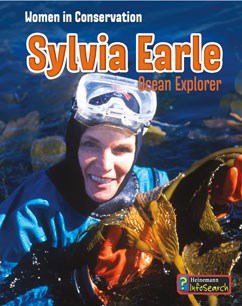
Sylvia Earle: Ocean Explorer (Women in Conservation) by Dennis Fertig
by Dennis Fertig
Most of us go to the beach and marvel at the the beauty of the ocean, but we rarely get even the smallest glimpse of what is happening under the waves. Sylvia Earle has logged in more than 7,000 hours underwater. Now she shares her passion and knowledge with others.
As appropriate for a children’s book, this biography starts with Earle’s childhood. Sylvia Earle spent her early years on a farm in New Jersey, where she remembers visiting the Jersey Shore at the age of three and discovering the power of the ocean. When she was twelve, Sylvia and her family moved to Dunedin, Florida. Suddenly, she had a beautiful ocean to investigate right in her own backyard. She jumped in and her life was changed forever.
Age Range: 8 – 11 years
Grade Level: 3 – 6
Publisher: Heinemann InfoSearch (July 1, 2014)
ISBN-10: 148460475X
ISBN-13: 978-1484604755
Last Name G – L
Jane Goodall
I am Jane Goodall by Brad Meltzer and Christopher Eliopoulos


Brad Meltzer’s picture book biographies are top notch. Add the captivating chimpanzee behavior scientist, Jane Goodall and how can you go wrong?
Age Range: 5 – 8 years
Publisher: Dial Books (September 6, 2016)
ISBN-10: 0525428496
ISBN-13: 978-0525428497


The Watcher: Jane Goodall’s Life with the Chimps by Jeanette Winter
by Jeanette Winter
This award-winning biography ties Jane Goodall’s childhood to her career as a ground-breaking primatologist and conservationist.
Age Range: 4 – 8 years
Grade Level: Preschool – 3
Publisher: Schwartz & Wade (April 5, 2011)
ISBN-10: 0375867740
ISBN-13: 978-0375867743


Untamed: The Wild Life of Jane Goodall by Anita Silvey and foreword by Jane Goodall gives a more detailed overview of Goodall’s accomplishments. It is written for older children, and is illustrated with the high quality photographs you would expect from National Geographic.
by Anita Silvey and foreword by Jane Goodall gives a more detailed overview of Goodall’s accomplishments. It is written for older children, and is illustrated with the high quality photographs you would expect from National Geographic.
Age Range: 8 – 12 years
Publisher: National Geographic Children’s Books; 1 edition (June 9, 2015)
ISBN-10: 142631518X
ISBN-13: 978-1426315183
Heidi Hammel


Beyond Jupiter: The Story of Planetary Astronomer Heidi Hammel (Women’s Adventures in Science (Joseph Henry Press)) by Fred Bortz
by Fred Bortz
Heidi Hammel is an astronomer who specializes in studying the planets Neptune and Uranus. Bortz fills in some of the details of her childhood, as well as discussing her scientific accomplishments. The strength of this series is that it covers more contemporary women whose stories have not been told for young people.
Age Range: 11 and up
Paperback: 128 pages
Publisher: Joseph Henry Press (December 31, 2006)
ISBN-10: 0309095522
ISBN-13: 978-0309095525
Caroline Herschel


Caroline’s Comets: A True Story by Emily Arnold McCully
This picture book biography explores the life of a famous woman astronomer who lived from 1750 to 1848. Caroline Herschel discovered galaxies, nebulae and was the first woman to discover a comet. Her other claim to fame was that she was the first woman scientist who was paid for her work.
Age Range: 4 – 8 years
Hardcover: 40 pages
Publisher: Holiday House (February 28, 2017)
ISBN-10: 0823436640
ISBN-13: 978-0823436644
Hypatia


Of Numbers and Stars: The Story of Hypatia by D. Anne Love and illustrated by Pamela Paparone
by D. Anne Love and illustrated by Pamela Paparone
Hypatia, the daughter of a mathematician and philosopher named Theon, studied mathematics, astronomy, and philosophy at a time when few women received an education. She became a scholar and teacher.
Shirley Ann Jackson
Strong Force: The Story of Physicist Shirley Ann Jackson (Women’s Adventures in Science) by Diane O’Connell


Shirley Jackson is a theoretical physicist who studies subatomic particles. Appropriately for a middle grade title, the author reveals details of Jackson’s childhood interest in science, including experiments with bumble bees. Her successes have led her to become the president of Rensselaer Polytechnic Institute and an advisor to President Barack Obama.
Publisher : Joseph Henry Press (April 30, 2006)
Reading age : 11 – 15 years
ISBN-10 : 0309095530
ISBN-13 : 978-0309095532
Mae Jemison
Mae Among the Stars by Roda Ahmed and illustrated by Stasia Burrington


From a young age, Mae Jemison was a dreamer. She dreamed of seeing the earth from space one day, so her family encouraged her to follow her passion and become an astronaut. That encouragement and her love of learning led Mae to become the first black woman to travel in space.
By the way, Roda Ahmed is a Norwegian author and columnist born in Hargeisa, Somalia. She speaks five languages!
Reading age : 4 – 8 years
Publisher : HarperCollins; Illustrated edition (January 9, 2018)
ISBN-10 : 0062651730
ISBN-13 : 978-0062651730
Mae C. Jemison―The First African-American Female Astronaut by Meeg Pincus and illustrated by Elena Bia

 Part of the Women in Science and Technology series, this biography follows the career of a woman who is not only the first African-American astronaut, but also an engineer and physician. And a dancer, too!
Part of the Women in Science and Technology series, this biography follows the career of a woman who is not only the first African-American astronaut, but also an engineer and physician. And a dancer, too!
Reading age : 6 – 10 years
Publisher : Discovery Library (August 11, 2019)
ISBN-10 : 1731612230
ISBN-13 : 978-1731612236
Henrietta Leavitt

Look Up!: Henrietta Leavitt, Pioneering Woman Astronomer by Robert Burleigh and illustrated by Raúl Colón (February 19, 2013), is a picture book biography of the woman who discovered how the brightness of stars had fixed patterns, information that would later be used to measure distances through space. Amazingly, at the time she did her work women weren’t even allowed to use telescopes; she made her observations from photographs.
by Robert Burleigh and illustrated by Raúl Colón (February 19, 2013), is a picture book biography of the woman who discovered how the brightness of stars had fixed patterns, information that would later be used to measure distances through space. Amazingly, at the time she did her work women weren’t even allowed to use telescopes; she made her observations from photographs.
Age Range: 4 – 8 years
Publisher: Simon & Schuster/Paula Wiseman Books (February 19, 2013)
ISBN-10: 1416958193
ISBN-13: 978-1416958192
Ada Byron Lovelace


Ada Byron Lovelace and the Thinking Machine by Laurie Wallmark and illustrated by April Chu, which is the story of a unique and fascinating woman who was years ahead of her time.
by Laurie Wallmark and illustrated by April Chu, which is the story of a unique and fascinating woman who was years ahead of her time.
Adults may have heard of the British poet Lord Byron, but likely they have missed the story of his inventive math whiz of a daughter, Ada Byron Lovelace. Lovelace overcame a severe childhood illness to write the first computer program. Who knows what she might have achieved if she hadn’t died at a relatively young age and if her collaborator, Charles Babbage, had actually built the analytical machine he had planned.
Ada Byron Lovelace and the Thinking Machine is likely to resonate with kids interested in computers, math, and engineering and inspire some who haven’t yet found their passions. History buffs, particularly those interested in women’s history, will also want to check it out.
Age Range: 5 and up
Publisher: Creston Books (October 13, 2015)
ISBN-10: 1939547202
ISBN-13: 978-1939547200
Last Name M – Q
Wangari Maathai
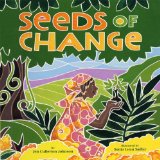
Seeds of Change: Planting a Path to Peace by Jen Cullerton and illustrated by Sonia Lynn Sadler is a picture book about the life of Wangari Maathai, a woman whose story is both uplifting and complex.
When she is a child, Wangari’s mother shows her the mugumo, the wild fig tree, and explains its importance. Later, when her brother tells her of the things he learns at school, Wangari decides she would like to go, too. Although it is unusual for a girl to receive an education, Wangari does go to school. In fact, she goes all the way to study in the United States and becomes a scientist.
When Wangari returns to Kenya, she find many things have changed. She finds the trees have all been cut down and the resulting environmental damage means that people can no longer grow food for themselves. In a move that is in one hand simple, and in the other incredibly insightful, she encourages the women to re-plant the trees. Her tree-planting movement grew and flourished as did the trees themselves, but not completely without hardship. Wangari had to overcome harsh political resistance and was even briefly imprisoned. She was released, however, and in 2004 Wangari became the first African woman to win the Nobel Peace Prize.
Reading level: Ages 9-12
Publisher: Lee & Low Books (June 30, 2010)
ISBN-10: 160060367X
ISBN-13: 978-1600603679
Barbara McClintock


Barbara McClintock: Nobel Prize Geneticist (Spotlight Biography) by Edith Hope Fine
by Edith Hope Fine
Edith Hope Fine has turned her considerable writing ability to chronicle the life of a truly creative, brilliant and persistent scientist. Barbara McClintock discovered the existence of jumping genes, something that few other scientists understood or believed for many years.
This title is only available as an e-book.
For ages 9+
File Size: 1281 KB
Print Length: 104 pages
Publisher: eFrog Press (April 12, 2012)
Sold by: Amazon Digital Services, Inc.
ASIN: B007TRDLJY


Barbara McClintock (Women in Science) by J. Heather Cullen, with an introduction by Jill Sideman
by J. Heather Cullen, with an introduction by Jill Sideman
Barbara McClintock noticed something odd about the genetics of the corn she was working with. With persistence and creativity, she discovered jumping genes. She was awarded the Nobel prize in 1983.
Age Range: 10 and up
Grade Level: 5 and up
Series: Women in Science
Paperback: 112 pages
Publisher: Chelsea House Publications (January 2003)
ISBN-10: 0791075222
ISBN-13: 978-0791075227


Barbara McClintock: Genius of Genetics (Great Minds of Science) by Naomi E. Pasachoff
by Naomi E. Pasachoff
Age Range: 9 and up
Grade Level: 4 and up
Publisher: Enslow Publishers (April 1, 2006)
ISBN-10: 0766025055
ISBN-13: 978-0766025059

Barbara McClintock: Pioneering Geneticist (Makers of Modern Science) by Ray Spangenburg and Diane Kit Moser
by Ray Spangenburg and Diane Kit Moser
Hardcover: 136 pages
Publisher: Chelsea House Pub (L) (March 2008)
ISBN-10: 0816061726
ISBN-13: 978-0816061723


Barbara McClintock: Pioneering Geneticist (Unlocking the Secrets of Science) by Kathleen Tracy
by Kathleen Tracy
Age Range: 9 and up
Publisher: Mitchell Lane Pub Inc (October 1, 2001)
ISBN-10: 1584151110
ISBN-13: 978-1584151111
Maria Sibylla Merian


Summer Birds: The Butterflies of Maria Merian by Margarita Engle and illustrated by Julie Paschkis explores the life of a woman who investigates the mysteries of insect metamorphosis during the 1600s. Known for her brilliant paintings, Merian was also a careful, patient observer and scientist.
by Margarita Engle and illustrated by Julie Paschkis explores the life of a woman who investigates the mysteries of insect metamorphosis during the 1600s. Known for her brilliant paintings, Merian was also a careful, patient observer and scientist.
Age Range: 5 – 8 years
Grade Level: Kindergarten – 3
Publisher: Henry Holt and Co. (BYR); 1 edition (April 27, 2010)
ISBN-10: 0805089373
ISBN-13: 978-0805089370
Maria Mitchell


Maria Mitchell (Great Women in History) by Anna Butzer
by Anna Butzer
Starting beginning readers out well, this small book distills Maria Mitchell’s life into the important details. It would be a great title for teaching timelines because it has ever expanding timeline at the bottom of every two-page spread.
Age Range: 4 – 8 years
Grade Level: Kindergarten – 1
Publisher: Pebble Books (July 1, 2014)
ISBN-10: 1491405422
ISBN-13: 978-1491405420


Maria’s Comet by Deborah Hopkinson and illustrated Deborah Lanino
by Deborah Hopkinson and illustrated Deborah Lanino
Having a picture book format and poetic text, Maria’s Comet fills in details of Maria’s childhood and family.
Age Range: 4 – 8 years
Publisher: Aladdin; Reprint edition (February 1, 2003)
ISBN-10: 0689856784
ISBN-13: 978-0689856785
Margaret Morse Nice


Bird Watching with Margaret Morse Nice (Naturalist’s Apprentice)
by Michael Elsohn Ross and illustrated by Laurie A. Caple
Margaret Morse Nice was an ornithologist who studied birds for more than eighty years. Ross does an excellent job of writing about lesser-known women who gave a great deal to their chosen field. Includes suggestions for activities.
Age Range: 8 and up
Lexile Measure: 980L (What’s this?)
Series: Naturalist’s Apprentice
Hardcover: 48 pages
Publisher: Carolrhoda Books (December 1997)
Language: English
ISBN-10: 1575050021
ISBN-13: 978-1575050027
Ellen Ochoa

Ellen Ochoa: The First Hispanic Woman Astronaut (Great Hispanics of Our Time) by Maritza Romero
by Maritza Romero
After becoming a pioneer in the field and inventing optical devices used in recognizing images, Ellen Ochoa went to work for NASA where she became the first female Hispanic astronaut in July 1991. Participating in four space flights, Dr. Ochoa was in space over 978 hours. She currently serves as Deputy Director at the Johnson Space Center in Houston, Texas. What an inspiring woman!
Lexile Measure: 860L (What’s this?)
Library Binding: 24 pages
Publisher: PowerKids Press; 1st edition (January 31, 2001)
ISBN-10: 0823950875
ISBN-13: 978-0823950874
Caitlin O’Connell


The Elephant Scientist (Scientists in the Field Series) by Caitlin O’Connell and Donna M. Jackson with photographs by the first author and her husband, Timothy Rodwell
by Caitlin O’Connell and Donna M. Jackson with photographs by the first author and her husband, Timothy Rodwell
The Elephant Scientist is a part of the award-winning Scientists in the Field series. Not a biography, this book follows author Dr. Caitlin O’Connell as she studies elephant social life and communication and at the same time works on ways to prevent elephants from ruining crops planted by local people. She discovers that elephants communicate to one another by detecting vibrations in the ground with their feet and trunks. What better way to learn about what a scientist does than in the scientists own words?
Age Range: 10 and up
Publisher: HMH Books for Young Readers; 1 edition (July 11, 2011)
ISBN-10: 0547053444
ISBN-13: 978-0547053448
Beatrix Potter
Beatrix Potter, Scientist by Lindsay H. Metcalf and illustrated by Junyi Wu

 Like the illustration of young Beatrix Potter on the cover, this book focuses a lens on the children’s author’s lesser-known years as a mycologist (one who studies fungi). Although Potter had no formal schooling in science, she was introduced to mushrooms by a talented amateur named Charles McIntosh. He became her mentor and sent her samples to study. Beatrix made beautiful detailed drawings of each specimen. She also figured out a way to prove that new mushrooms grow from spores, something that wasn’t well known at the time. However, like other women scientists in the 1800s and early 1900s, Beatrix Potter encountered resistance when she tried to share her findings.
Like the illustration of young Beatrix Potter on the cover, this book focuses a lens on the children’s author’s lesser-known years as a mycologist (one who studies fungi). Although Potter had no formal schooling in science, she was introduced to mushrooms by a talented amateur named Charles McIntosh. He became her mentor and sent her samples to study. Beatrix made beautiful detailed drawings of each specimen. She also figured out a way to prove that new mushrooms grow from spores, something that wasn’t well known at the time. However, like other women scientists in the 1800s and early 1900s, Beatrix Potter encountered resistance when she tried to share her findings.
After finishing the book, educators and parents will likely want to discuss with young readers the pros and cons of how Beatrix ultimately dealt with the rejection.
Overall Beatrix Potter, Scientist will appeal to both young readers interested in STEM and also those interested in women’s history. Investigate a copy today!
Grade Level : Preschool – 3
Publisher : Albert Whitman & Company (September 1, 2020)
ISBN-10 : 0807551759
ISBN-13 : 978-0807551752
Jeanne Power
Secrets of the Sea: The Story of Jeanne Power, Revolutionary Marine Scientist by Evan Griffith and illustrated by Joanie Stone


Jeanne Power was born in France, but moved to Sicily with her husband in 1818 when she was 23. Formerly a busy seamstress, she was likely not used to staying at home. To pass the time, she began to study the animals and plants of her new surroundings. The ocean intrigued her the most, but how could she observe what was going on in the water? Build one of the first glass-sided aquariums of course!
During her studies, Jeanne Power concentrated on the paper nautilus, which is a type of octopus. At the time, no one was sure whether the nautilus borrowed the delicate shells they carried from other creatures or whether they grew them. Jeanne Power figured out the answer. It wasn’t always smooth sailing, but she was able to publish her findings.
The back matter is extensive, including notes about “Jeanne’s life and legacy,” “The Paper Nautilus, information about “Marine Biology and Conservation,” a “Note on Historical Research,” and a “Bibliography.”
Secrets of the Sea would be a great choice for a science unit on oceans or for Women’s History Month. Explore a copy today!
Reading age : 6 – 9 years
Publisher : Clarion Books (March 9, 2021)
ISBN-10 : 0358244323
ISBN-13 : 978-0358244325
Last Name R – Z
Nancy Grace Roman


Always Looking Up: Nancy Grace Roman, Astronomer by Laura Gehl and illustrated by Louise Pigott and Alex Oxton
Known affectionately as the mother of the Hubble Telescope, Nancy Grace Roman was passionate about studying space from an early age. However, she had to overcome vision problems and stereotypes to achieve her goal. Because she learned how to work hard and be persistent, she was was able to drive the Hubble telescope project to success when countless others doubted the viability of putting a giant telescope in space.
Laura Gehl’s text is lively and includes just the right amount of detail.
Age Range: 5 – 7 years
Publisher: Albert Whitman & Company; None edition (October 1, 2019)
ISBN-10: 0807502960
ISBN-13: 978-0807502969
Mary Golda Ross


Classified: The Secret Career of Mary Golda Ross, Cherokee Aerospace Engineer by Traci Sorell and illustrated by Natasha Donovan
Introduction to Mary Golda Ross, who designed classified airplanes and spacecraft as Lockheed Aircraft Corporation’s first female engineer. Find out how her passion for math and the Cherokee values she was raised with shaped her life and work. Written by Cherokee author Traci Sorell.
Reading age : 7 – 11 years
Publisher : Millbrook Press ™ (March 2, 2021)
ISBN-10 : 1541579143
ISBN-13 : 978-1541579149
Vera Rubin


The Stuff Between the Stars: How Vera Rubin Discovered Most of the Universe by Sandra Nickel and illustrated by Aimée Sicuro
Vera Rubin studied where galaxies were found in space and how they moved relative to each other. When she saw the stars within galaxies move at different speeds than she thought they should, she demonstrated there was something in between the stars that we can’t see or detect, something pulling the stars. That “something” had been previously named dark matter and there is a lot of it!
The Stuff Between the Stars is sure to thrill budding astronomers. It would be perfect to accompany a trip to a planetarium, as well as for Women’s History Month discussions. Gaze into a copy today!
Reading age : 6 – 9 years
Publisher: Abrams Books for Young Readers (March 2, 2021)
ISBN-10 : 1419736264
ISBN-13: 9781419736261
Kate Sessions


The Tree Lady: The True Story of How One Tree-Loving Woman Changed a City Forever by H. Joseph Hopkins and illustrated by Jill McElmurry is a lovely picture book biography about Kate Sessions, the woman who is considered to be the Mother of Balboa Park in San Diego.
by H. Joseph Hopkins and illustrated by Jill McElmurry is a lovely picture book biography about Kate Sessions, the woman who is considered to be the Mother of Balboa Park in San Diego.
Kate Sessions came to San Diego to become a teacher, but went on to almost single-handedly transform the city from a barren desert to a tree-filled paradise using her interest in horticulture/botany.
Age Range: 5 – 10 years
Grade Level: Kindergarten – 5
Publisher: Beach Lane Books (September 17, 2013)
ISBN-10: 1442414022
ISBN-13: 978-1442414020
Joanne Simpson
Breaking Through the Clouds: The Sometimes Turbulent Life of Meteorologist Joanne Simpson by Sandra Nickel and illustrated by Helena Perez Garcia


Learn about the importance of clouds in determining weather from this wonderful picture book biography.
Joanne Simpson loved clouds and wanted to study them. After some push back from her male professors, she persevered to become the first woman in the world to earn a PhD in Meteorology.
Breaking Through the Clouds is a perfect choice for Women’s History Month, as well as for budding historians and budding scientists. Get inspired by a copy today!
Full review and activity suggestions at Growing With Science blog.
Reading age : 6 – 9 years
Publisher : Abrams Books for Young Readers (March 8, 2022)
ISBN-10 : 1419749560
ISBN-13 : 978-1419749568
Amy Vedder


Gorilla Mountain: The Story of Wildlife Biologist Amy Vedder (Women’s Adventures in Science (Joseph Henry Press))
by Rene Ebersole (Author)
Following in the footsteps of Dian Fossey, Amy Vedder not only studies gorillas, but must fight to save them. The strength of this series is that it covers more contemporary women whose stories have not been told for young people.
Age Range: 11 and up
Publisher: Joseph Henry Press (December 31, 2006)
ISBN-10: 0309095514
ISBN-13: 978-0309095518
Collections of Biographies
Animal Allies: 15 Amazing Women in Wildlife Research by Elizabeth Pagel-Hogan.


Elizabeth Pagel-Hogan has sorted the animals into five categories: birds, arthropods, sea creatures, reptiles and amphibians, and mammals. Within each category, she has found three amazing female scientists who study those types of animals. For example, Corina Newsome is saving seaside sparrows while Michelle LaRue uses satellites to study Antarctic birds. Lizzy Lowe takes on what many fear in researching spiders, and Erin Ashe lives out the dream of many studying dolphins and whales. Kristen Hecht chases the elusive hellbender amphibian while Enikö Kubinyi uses robots to get information on wolf pups.
As for reading level, the suggested age is 12+, but mature middle graders will probably enjoy it as well.
Animal Allies is a must have collection for young readers who are interested in careers studying animals. It is also a wonderful choice for those interested in STEM, as well as nature lovers. Investigate a copy today!
Reading age : 12 years and up
Publisher : Chicago Review Press (May 17, 2022)
Hardcover : 224 pages
ISBN-10 : 1641606223
ISBN-13 : 978-1641606226
No Boundaries: 25 Women Explorers and Scientists Share Adventures, Inspiration, and Advice by two National Geographic Explorers, Clare Fieseler and Gabby Salazar.


The authors gathered an amazing group of women to highlight. They have included diverse women working on a wide range of projects from all around the world, from Linguistic Anthropologist Sandhya Narayanan to Volcanologist Stephanie Grocke. Inspiring!
As you would expect from any book by National Geographic, the illustrations are eye-popping full color photographs. Even better, we learn about how Visual Storyteller Hannah Reyes Morales and Conservation Photographer Jenny Adler capture some of those amazing images.
No Boundries is perfect to help girls evaluate potential careers. Discovering what careers are possible and how women achieved their goals is a absolute treasure. Explore a copy today!
Grade level : 5 – 9
Publisher : National Geographic Kids (February 1, 2022)
ISBN-10 : 1426371764
ISBN-13 : 978-1426371769
Black Women in Science: A Black History Book for Kids by Kimberly Brown Pellum, PhD.


A collection of biographies of 15 incredible Black women who pioneered in STEM. Includes biographies of Mae Jemison, Annie Easley, Bessie Coleman, Katherine Johnson, Gladys West, Mamie Phipps Clark, Jane Cooke Wright, and many more.
Publisher : Rockridge Press (October 8, 2019)
Reading age : 9 – 12 years
ISBN-10 : 1641527072
ISBN-13 : 978-1641527071


Wonder Women of Science: How 12 Geniuses Are Rocking Science, Technology, and the World by Tiera Fletcher, Ginger Rue and illustrated by Sally Wern Comport
This middle grade title starts with an introduction by coauthor and Black aerospace engineer Tiera Fletcher, then gives profiles of twelve other prominent female scientists who are still active in their fields. Back matter includes reading suggestions, an index, a glossary, and some surprising ideas for how to get involved in the world of STEM. Exciting!
Reading age : 9 – 12 years
Publisher : Candlewick (March 23, 2021)
ISBN-10 : 1536207349
ISBN-13 : 978-1536207347


Magnificent Minds: 16 Pioneering Women in Science and Medicine by Pendred E. Noyce.
by Pendred E. Noyce.
This book is a collection of biographies chronicling the lives of women who made a name for themselves in the areas of STEM and health care, complete with timelines for each woman.
Age Range: 12 and up
Hardcover: 180 pages
Publisher: Tumblehome Learning, Inc. (March 1, 2015)
ISBN-10: 0989792471
ISBN-13: 978-0989792479


Super Women In Science (Turtleback School & Library Binding Edition) (Women’s Hall of Fame) by Kelly DiDomenico
by Kelly DiDomenico
Age Range: 9 and up
School & Library Binding: 102 pages
Publisher: Turtleback (January 1, 2003)
ISBN-10: 0613804333
ISBN-13: 978-0613804332
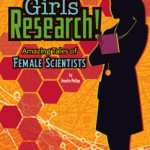
Girls Research!: Amazing Tales of Female Scientists (Girls Rock!) by Jennifer Phillips
This book gives a brief overview of the lives of 56 women scientists and researchers.
Age Range: 9 – 13 years
Library Binding: 64 pages
Publisher: Savvy (January 1, 2014)
ISBN-10: 147654056X
ISBN-13: 978-1476540566


Women in Science: 50 Fearless Pioneers Who Changed the World written and illustrated by Rachel Ignotofsky
The illustrations in this book are very modern. Check out Rachel Ignotofsky’s website for examples.
Ages 10 & up
Hardcover: 128 pages
Publisher: Ten Speed Press; Gift edition (July 26, 2016)
ISBN-10: 1607749769
ISBN-13: 978-1607749769
Other lists of children’s books about women in STEM:
Women in Science – Trailblazers Before the 20th Century at Kidlit Celebrates Women’s History Month 2012
Women in Science – Trailblazers of the 20th Century at Miss Rumphius Effect
Biographies of Women Scientists: For Girls and Young Women at Library of Congress
Looking for subject ideas for a biography about a woman in STEM? Try this list of Women in STEM from the National Women’s History Project.
______
Save
Save
by Joan Marie Galat and illustrated by Wendy Ding describes a particular species of tree, how it used by humans, and what animals depend on that particular kind of tree in a series of four-page spreads. The 11 species of trees highlighted range from red maples and downy birches to pau brasil and cork oaks.
by Margi Preus and illustrated by Rebecca Gibbon consists of a series of two-page spreads telling the stories of 14 famous, tall and exceptionally-old trees from around the world, the back matter gives more information about the trees and a number of suggestions about what the reader can do to help and encourage trees.
by Carol Reed-Jones and Christopher Canyon describes how other living things depend on trees and how trees have life cycles.
by Bonnie Worth and illustrated by Aristides Ruiz follows The Cat in the Hat as he takes Sally and Dick for a ride through the understory, canopy, and emergent layers of a tropical rain forest. The books in this series are uniformly good and deliver more serious science than the cartoon character illustrations might indicate.
by Bonnie Worth and illustrated by Aristides Ruiz and Joe Mathieu uses the familiar Dr. Seuss characters and rhyming scheme to teach children how to identify different species from the shape of their crowns, leaves, lobes, seeds, bark, and fruit. The books in this series are well-researched, and deliver more serious science than the cartoon character illustrations might imply.
by H. Joseph Hopkins and illustrated by Jill McElmurry is a lovely picture book biography about Kate Sessions, the woman who is considered to be the Mother of Balboa Park in San Diego.
by Lori Nichols is really about a new sibling arriving in a family, but features a girl named Maple whose parents planted a maple tree when she was born. She and the tree grow together.

